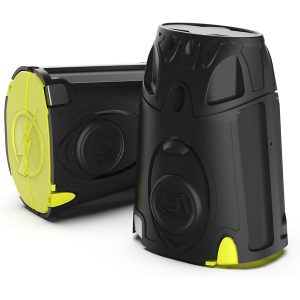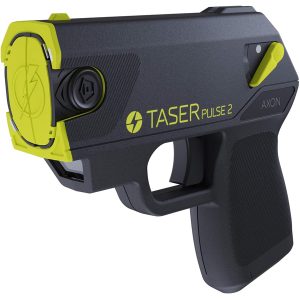Taser Buyers Guide
(Conducted Electrical Weapons & Stun Devices: what first-time buyers should know)
Introduction: What is a Taser?
“Taser” is a common brand name often used interchangeably with conducted electrical weapons (CEWs) and stun guns. These devices deliver an electrical pulse intended to temporarily incapacitate an attacker by disrupting voluntary muscle control. Civilian models vary from contact stun devices (must touch the attacker) to cartridge-based CEWs that fire probes for distance deployment.
This guide helps you choose the right device, understand legal and safety issues, and maintain and train with it responsibly.
1 — Types of Devices
- Contact Stun Guns
- Require direct contact with the assailant. Compact, often cheaper, reusable.
- Pros: Simple, no cartridges. Cons: Must be in arm’s reach.
- Probe-Based CEWs (Cartridge/TASER-like)
- Fire two probes connected by wires to deliver current from a distance (usually 7–25 feet depending on model).
- Pros: Distance capability, strong stopping power. Cons: More expensive, cartridges to replace, may require training.
- Pepper + Electric Hybrid Devices
- Combine chemical spray and electrical stun for layered defense.
- Pros: Redundant effects. Cons: More complex and costly.
-
Tasers for Home Defense - Taser Pulse 2
Self Defense Tasers Replacement Cartridge 2 Pack
$59.99Original price was: $59.99.$50.99Current price is: $50.99. Add to cart -
Tasers for Home Defense - Taser Pulse 2
Tasers for Home Defense
$399.99Original price was: $399.99.$339.99Current price is: $339.99. Add to cart
2 — Key Features to Compare
- Effective Range (for probe models): Short-range vs. mid-range options matter for your lifestyle.
- Voltage & Pulse Pattern: Manufacturers list specs — higher specs don’t necessarily mean “more dangerous” but impact effectiveness and safety.
- Cartridge Availability & Cost: Replacement cartridge cost and legal restrictions vary.
- Battery Type & Runtime: Rechargeable vs. replaceable batteries; include standby time and number of discharges per charge.
- Safety Features: Safety switch, trigger lock, safety covers, or arming indicators.
- Size & Ergonomics: How it fits your hand, holster options, concealability.
- Training/Simulator Modes: Practice modes or inert training cartridges are valuable.
- Legal Compliance: Some models are sold in specific states only; vendors often label compliant models.
3 — Who Should Consider a Taser?
- People who want distance capability beyond a contact-only option.
- Individuals who are comfortable with devices that can temporarily incapacitate.
- Residents in areas where probe-based CEWs are legal for civilians.
- NOT recommended if you’re unwilling/unable to undergo training or if local laws prohibit them.
4 — Legal & Safety Considerations
- Laws vary widely. Some states and municipalities restrict or ban probe-based CEWs; others allow them for civilians. Check local statutes before purchasing or carrying.
- Airports, schools, and some venues deny possession — follow venue rules.
- Use-of-force law: Using a CEW can be legally scrutinized; use only in legitimate self-defense circumstances.
- Medical risks: CEWs are designed to be non-lethal, but they can pose risks for people with certain health conditions (cardiac devices, pregnancy, etc.). Warnings and contraindications should be read and considered.
- Recordkeeping & Reporting: Some jurisdictions require reporting CEW use to authorities.
Action: Always verify up-to-date local regulations before buying or carrying. This guide is educational, not legal advice.
5 — Training & Responsible Use (High-Level)
- Familiarize yourself with your device’s safety features and practice deploying it in a safe, legal training environment.
- Use training cartridges or inert units for drills rather than live cartridges.
- Understand escalation: CEWs are a defensive tool; combine device ownership with situational awareness and de-escalation training.
- After deployment: Call emergency services as needed — even if the subject appears incapacitated.
(I’m intentionally not providing step-by-step attack/targeting instructions — those belong in certified training courses.)
6 — Maintenance & Storage
- Batteries: Keep charged per manufacturer recommendations; test periodically.
- Cartridges: Store sealed cartridges away from heat; check expiration dates.
- Visual inspection: Check probes/wires (if applicable), casing, and safety switches.
- Holsters: Use a retention holster to prevent accidental access.
- Secure storage: Keep away from children and unauthorized users.
7 — Choosing the Right Model (Decision Checklist)
- Legality: Is probe-based use legal where you live and travel? If not, consider a contact stun gun or alternative.
- Purpose: Home, vehicle, or active carry? Range needs vary.
- Comfort with device: Weight, size, and ergonomics matter. Try in-hand if possible.
- Budget: Include recurring costs (cartridges, batteries).
- Support & Warranty: Buy from reputable brands with clear warranty and customer service.
- Training availability: Prefer vendors offering training or practice cartridges.
8 — Accessories & Add-Ons
- Replacement cartridges (match model)
- Holsters or retention cases (belt/inside-the-waistband options)
- Training cartridges or inert trainers
- Spare batteries / charging docks
- Carriage restrictions/reminders stickers for your vehicle or bag (helps compliance)
9 — Pros & Cons (Quick Summary)
Pros
- Can incapacitate from distance (probe models).
- Reusable and immediate response option.
- Strong deterrent effect.
Cons
- Legal restrictions in many places.
- Potential medical and legal consequences.
- Higher upfront & recurring costs for probe models.
10 — FAQ
Q: Are Tasers legal for civilians?
A: It depends on state and local law. Probe-based CEWs are restricted in some states. Always check current local rules.
Q: What’s the difference between a stun gun and a Taser?
A: “Taser” is a brand; commonly, stun guns require contact, while Tasers/CEWs can fire probes to deliver a shock from distance.
Q: Do I need training to buy one?
A: Training isn’t always legally required but is strongly recommended for safe and effective use.
Q: Are they dangerous?
A: Designed to be non-lethal, but any CEW can pose risks to people with certain health conditions. Read warnings and consult medical/legal guidance as needed.
Q: How long does a cartridge last?
A: Check the manufacturer; many cartridges have expiration dates and limited shelf life.
11 — Where to Buy (Buy Safely)
- Authorized dealers or manufacturer stores — avoid gray-market sellers.
- Verify serial numbers and warranty at point of sale.
- Look for transparent return policies and clear legal compliance statements.
- Read real-user reviews from trusted sites and forums (but be wary of fake reviews).
12 — Final Thoughts
A Taser or CEW can be an effective component of a personal safety plan — but it’s not a standalone solution. Pair device ownership with training, legal awareness, and non-violent prevention strategies. Prioritize reputable products, follow the law, and practice responsibly.
Don’t wait until it’s too late. Equip yourself with reliable, Self Defense Tools and take control of your personal safety.
All the products listed make great, low-cost gifts. Keeping you and your loved ones safe.


